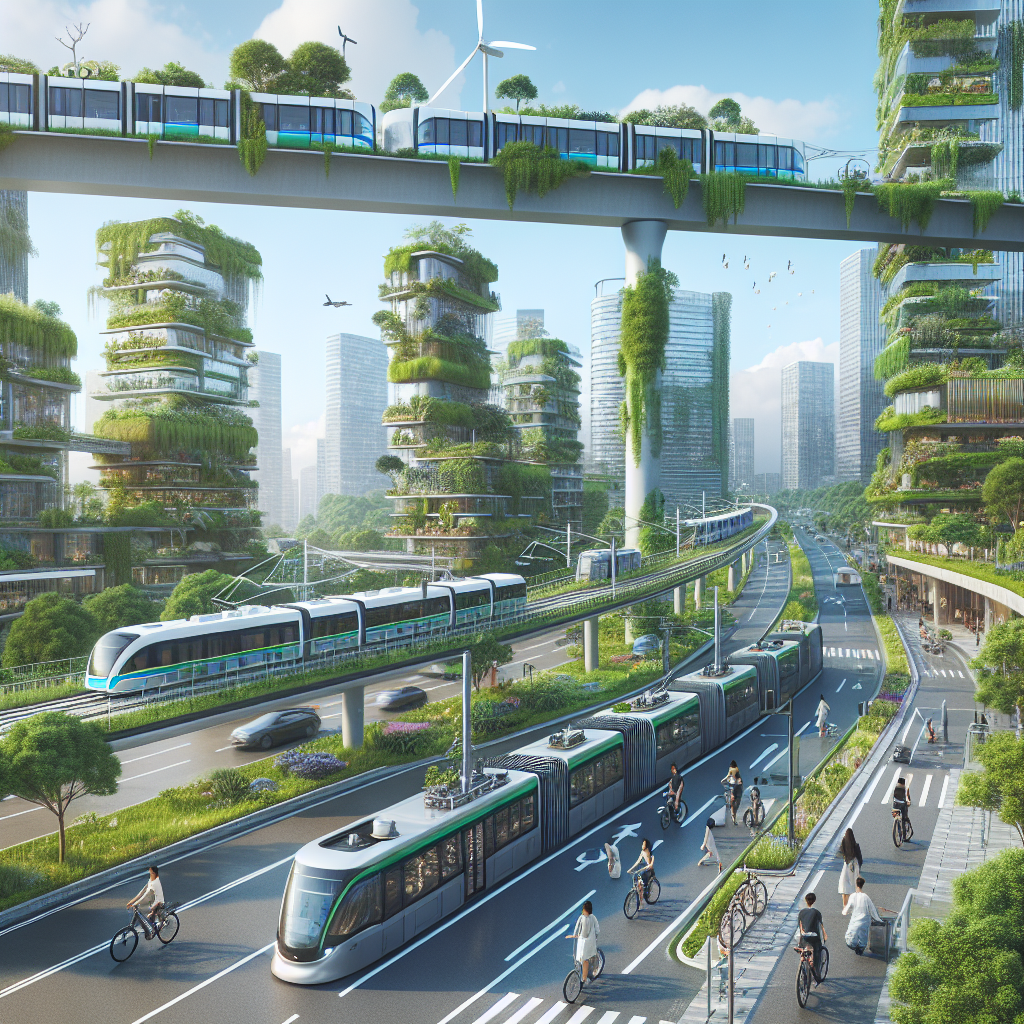The Future of Public Transportation: Achieving Sustainability in Urban Mobility
In the face of urbanization, climate change, and the growing necessity for efficiency, the future of public transportation is at a pivotal point. Urban mobility is not just about getting from A to B; it’s about creating sustainable, efficient, and accessible transportation networks that enhance the quality of life in cities while minimizing environmental impact. This article explores the innovations and strategies that could define the future of public transportation, weaving a path towards sustainability in urban mobility.
Embracing Technological Innovations
The advancement of technology is a key driver in transforming public transportation. Electric vehicles (EVs) are at the forefront of this shift, with cities around the world beginning to incorporate electric buses and trains into their public transport fleets. These vehicles not only reduce greenhouse gas emissions but also offer quieter, smoother rides, contributing to a more pleasant urban environment.
Autonomous vehicles (AVs) also promise to revolutionize public transportation. Driverless buses and shuttles could offer more flexible and efficient services, especially in off-peak hours or less densely populated areas. Moreover, integrating artificial intelligence (AI) with traffic and public transport systems can optimize routes and schedules, reducing congestion and improving service reliability.
Prioritizing Multimodal Transportation Networks
A sustainable future for urban mobility relies on multimodal transportation systems that seamlessly connect different modes of transport. This approach encourages the use of public transport, cycling, and walking, reducing reliance on private cars. Apps that provide real-time information and allow for easy planning and payment across multiple transport modes are crucial in making these networks user-friendly.
Investments in infrastructure are equally important. Dedicated bus lanes, safe cycling paths, and pedestrian-friendly streets not only make public transport more efficient but also encourage active travel, contributing to public health and environmental sustainability.
Fostering Public-Private Partnerships
The complexity and cost of modernizing urban transportation systems necessitate collaboration between public authorities and private enterprises. Public-private partnerships (PPPs) can enable the rapid deployment of new technologies and innovative services. For instance, ride-sharing and bike-sharing programs can complement traditional public transport, offering last-mile solutions that enhance the overall mobility ecosystem.
Implementing Policy and Regulatory Frameworks
Achieving sustainability in urban mobility requires supportive policy and regulatory frameworks. Governments can play a significant role by incentivizing the use of public transport and other sustainable modes of travel. This might include financial measures such as subsidies for public transport, taxes or restrictions on private car use in city centers, and investments in green infrastructure.
Policies that promote compact, mixed-use urban development also contribute to sustainable mobility by reducing the need for long commutes and making public transport, cycling, and walking more viable and attractive options.
Enhancing Accessibility and Equity
Sustainable urban mobility must be inclusive, ensuring access for all segments of the population, including those with mobility challenges, the elderly, and low-income communities. This involves not only physical accessibility to vehicles and infrastructure but also affordability and the integration of services to reach underserved areas. Achieving equity in urban mobility is crucial for the social sustainability of cities.
FAQs on the Future of Public Transportation
Q: How can individuals contribute to sustainable urban mobility?
A: Individuals can make a difference by opting for public transportation, cycling, or walking instead of using private cars for short trips. Supporting policies and initiatives that promote sustainable transport and being open to using new mobility services as they become available also contribute to the shift towards sustainable urban mobility.
Q: Are electric vehicles really a sustainable option?
A: Electric vehicles are generally considered more sustainable than traditional petrol or diesel vehicles due to their lower operating emissions. However, their sustainability also depends on how the electricity they use is generated. As the share of renewable energy in the power grid increases, the sustainability of EVs will improve further.
Q: What are the main barriers to implementing autonomous public transport?
A: The main challenges include technological hurdles, regulatory issues, safety concerns, and public acceptance. Ensuring the reliability and safety of autonomous vehicles in all traffic conditions is crucial, as is developing legal frameworks to govern their operation.
Q: How can cities finance the transition to sustainable public transportation?
A: Financing options include public funding, PPPs, grants from international organizations, and innovative financing mechanisms such as green bonds. Encouraging investment in sustainable mobility requires clear policy direction and incentives for private sector involvement.
Q: Can technology alone solve the challenges of urban mobility?
A: While technology plays a critical role, achieving sustainable urban mobility also requires holistic planning, policy support, and behavioral change. A comprehensive approach that includes infrastructure development, regulatory frameworks, and public engagement is essential for transformative change.
The journey towards sustainable urban mobility is complex and multifaceted, involving technological innovation, policy reform, and shifts in public behavior. By embracing these changes, cities can create more sustainable, efficient, and inclusive transportation systems that not only meet the mobility needs of their residents but also contribute to broader environmental and social goals. The future of public transportation is not just about moving people; it’s about moving towards a more sustainable and equitable world.

